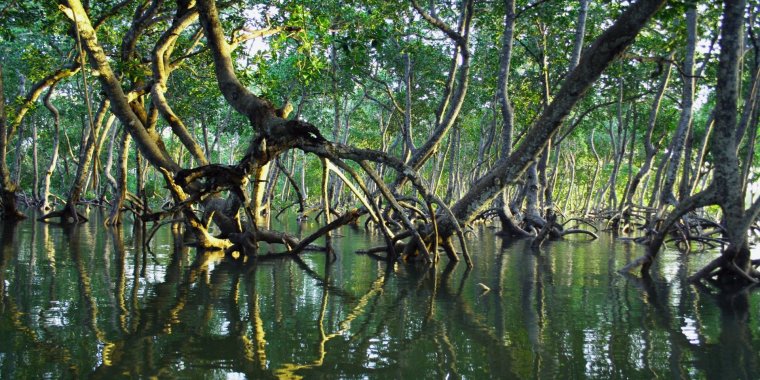| News / Science News |
Mangrove root model may hold key to preventing coastal erosion
Mangrove vegetation, which grows on subtropical shorelines, provides a range of ecosystem services such as reducing coastal erosion, promoting biodiversity, and removing nitrogen, phosphorus and carbon dioxide.

Mangrove. Photo: Timothy K/Unsplash
These vital ecological functions are influenced by the water flow around intricate mangrove roots. The flow mixes up sediments and generates a sediment deposition region behind the roots.
Research suggests that mangroves' complex patterns of sedimentation promote silt movement near the roots to prevent plants from being buried, while facilitating sediment deposition a short distance away to provide an environment for new growth.
Oscar Curet, an engineer at Florida Atlantic University, led new research that's the first to quantify the optimal mangrove root configuration to prevent shoreline erosion using a predictive model.
The study used simplified mangrove root models with different root system configurations to investigate the impact on the initial motion of sediment critical to the evolution of shorelines and deltas.
The study identified the pivotal role of mangrove root porosity, and provides insights into the sediment transport and erosion processes that govern the evolution of shorelines. Jordan Berg, a program director in NSF's Directorate for Engineering, said that "the results may help predict the outcome of mangrove erosion on estuary shorelines." (National Science Foundation)
YOU MAY ALSO LIKE





